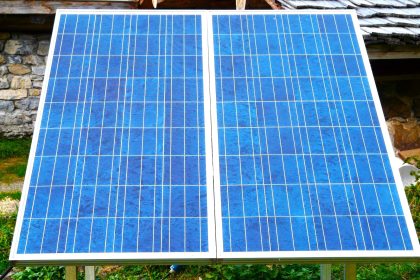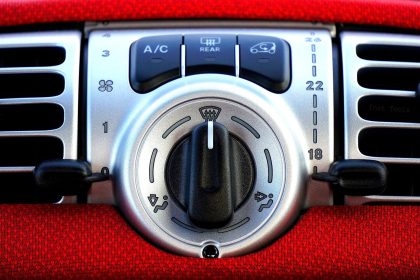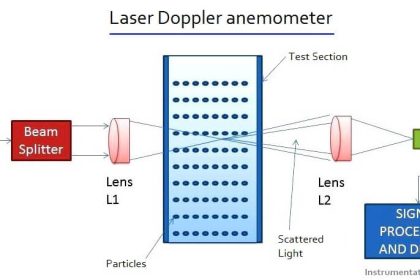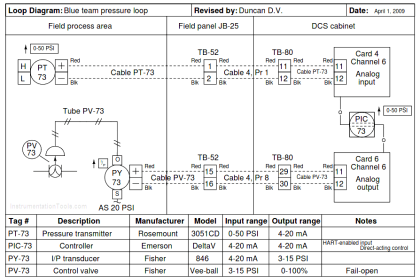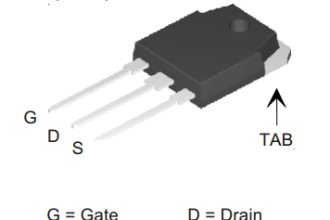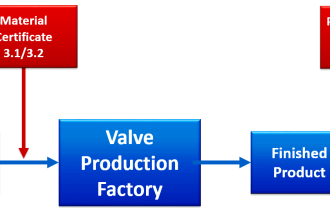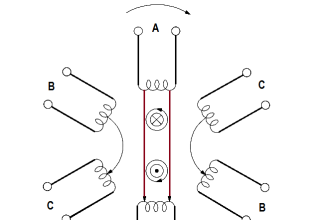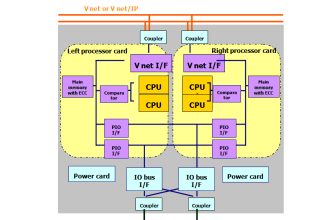RS-485 is also known as TIA-485. RS485 is a standard defining the electrical characteristics of drivers and receivers for use in serial communications systems.
RS485 is widely used in industrial control systems and can handle up to 32 devices on a single network. RS-485 is commonly used in industrial automation for monitoring and controlling PLC, Variable Frequency Drives, DCS, and others.
RS-485 Network
When designing a network using RS-485, you should take into account several key factors:
Network wiring: The manner in which the network is wired is crucial for successful signal transmission. Ideally, use a twisted pair for +(B), –(A), and an additional wire terminating on REF, DGND, or COM.
Shielding: Implement shielding to protect signal transmissions from external interference.
Polarity: Set the network polarity accurately to ensure correct signal transmission.
Termination: Proper network termination is vital to avoid signal reflections, which can lead to communication errors.
Biasing: Biasing is beneficial for maintaining signal quality over long distances.
Unit Load: The network’s unit load impacts the number of devices that can be attached to it.
Data Rate: The network’s data rate determines the pace of communication.
Network Length: The length of the network can affect signal transmission quality.
Topology: The layout of the network – specifically, how the devices are linked – can influence communication efficiency.
Basic Principle
RS-485 communication is based on differential signaling, where information is transmitted over two complementary signals sent across two wires, often referred to as A and B.
The voltage difference between these two wires is what conveys the information, rather than the voltage between a single wire and ground. This makes RS-485 systems highly resistant to common-mode noise.

Example of RS-485 Communication
Let’s consider a simple example of an RS-485 network with one master device and two slave devices.
Idle State: When no device is transmitting, the line is in an idle state. In this state, the differential voltage between lines A and B is zero.
Master Transmits: When the master device wants to send data, it changes the voltage difference between lines A and B. For example, a ‘1’ might be represented by A being at a higher voltage than B, and a ‘0’ might be represented by B being at a higher voltage than A.
Slaves Receive: All devices on the network, including the slave devices, constantly monitor the voltage difference between lines A and B. When they detect a change, they interpret this as a bit of data.
Slave Responds: If the master device sends a command that requires a response from a slave device, that slave device will wait until the master has finished transmitting, then change the voltage difference between lines A and B to send its response.
Master Receives: The master device, like the slaves, is constantly monitoring the voltage difference between lines A and B, so it will receive the response from the slave.
Return to Idle State: Once all data has been transmitted, the line returns to the idle state, with a zero voltage difference between lines A and B.
In this way, data can be sent back and forth across an RS-485 network. It’s important to note that all devices on the network need to use the same logic for interpreting voltage differences as bits (i.e., whether A being at a higher voltage than B represents a ‘1’ or a ‘0’).
In a network with multiple devices, each device needs to have a unique address so that it knows when to listen and when to ignore the communications on the line. This is typically handled by the protocol being used on top of RS-485, such as Modbus or Profibus.
For example, in a Modbus network, each message sent by the master starts with the address of the device it’s intended for. When devices see a message with their address, they know to process the message and potentially send a response. If the address doesn’t match their own, they ignore the message.
Characteristics of RS-485 Communication
RS-485 is a robust and versatile communication standard that is widely used in industrial applications. Its use of differential signaling makes it resistant to noise, and its support for up to 32 devices on a single network makes it suitable for a wide range of applications.
| Characteristic | Description |
|---|---|
| Standard | TIA/EIA-485 |
| Type | Differential |
| Topology | Point-to-point, Multi-point, Multi-drop |
| Maximum Devices | 32 devices (1 driver and 31 receivers) |
| Maximum Distance | 4000 feet (1200 meters) |
| Maximum Data Rate | 10 Mbps at 40 feet (12 meters), 100 kbps at 4000 feet (1200 meters) |
| Voltage Levels | Differential voltage between +1.5V and +6V for “1”, between -1.5V and -6V for “0” |
| Cable Type | Twisted pair (typically shielded) |
| Termination | Typically requires termination resistors at both ends of the bus |
| Noise Immunity | Good, due to differential signaling |
| Common Mode Voltage Range | -7V to +12V |
| Baud Rate | Up to 10 Mbps |
| Modes of Operation | Half-duplex or Full-duplex |
More details about RS485 are as follows.
Reference Voltage Overview
For isolated gadgets, the reference voltage can significantly impact communication within an RS-485 network. Grasping this concept is crucial when creating and implementing an RS-485 network.
Data Speeds
The data rates, often termed baud, of RS-485 can vary from a rapid 10 Mbps (megabits per second) to a sluggish 9.6 kbps (kilobits per second). It’s reasonable to question why one wouldn’t simply transmit signals at the quickest possible speed to hasten network updates.
The answer lies in the degradation of communication signals due to transmission losses on the cable when the product of the communication trunk length and the baud rate exceeds the recommended limit. A good guideline is to ensure it remains below 108.
As an instance, a baud rate of 76,800 bps on 1200-meter cable results in a value of 92,160,000, less than the 100,000,000 limits. That’s why common communication protocols like BACnet MS/TP and Modbus typically recommend baud rates between 9.6 – 115.2 kbps. These rates won’t degrade signal quality over the maximum network cable length of 1200 meters (4000 ft).
Each device on an individual RS-485 link must communicate at an identical baud rate. A network configured to communicate at 76.8 kbps across all devices will fail if even a single device communicates at 38.4 kbps due to a timing mismatch that confounds signal recognition.
Network Length Considerations
The total length of your network is not strictly governed by the baud rate. Other elements like wire gauge, biasing circuit characteristics (impedance or capacitance), the existence of stubs from the main trunk, and the physical arrangement of your network cable can all affect your network’s maximum length.
Take into account all these factors and maintain a buffer to stay within the advised limit for the overall max network cable length.
Topology
The RS-485 standard necessitates a daisy-chain wiring topology because of the driver technology employed. This requirement means devices are connected in a series, often by terminating two wires to the B(+), A(-), and REF terminals for multiple devices along a single communication link.
Only end devices will have a single pair of wires terminated into the communication connector, except for necessary End of Line (EOL) terminators or bias circuits. Though the RS-485 standard tolerates minor stubs from the main link, too many or overly long lengths can lead to signal reflections or degradation.
Shielding
The communication cable shield offers additional protection against interference, blocking Electromagnetic Interference (EMI) that may induce current over long cable lengths within the magnetic field of other EMI-producing cables.
For effective interference mitigation, the shield should provide a current path that doesn’t impact the communication wires. The shield should maintain a continuous connection from each device, grounding only at a single point, ideally at the main supervisor controller of your network.
Polarity
RS-485 functions by defining the transmission of ‘0’s and ‘1’s via the positive or negative states of the transceiver terminals, A and B. To perceive the same logical state, all devices on the communication link must generate and detect signals of the same polarity.
A reversed device will read and generate incorrect signals, leading to a communication breakdown.
End-of-Line Terminations
With RS-485 communication, 1s and 0s propagate as a differential voltage. Minor variations in wiring can cause reflections.
Installing a terminating resistor that matches the wire’s characteristics on each link end can prevent these signal reflections.
Biasing
In the absence of signals, drivers don’t actively transmit 1s and 0s for receivers to detect, but they remain active and ready for the next signal.
To eliminate this condition and achieve a “failsafe” state, a bias network is employed to hold wire B(+) positive relative to wire A(-). Regular network operation can override this bias.
Unit Load (UL)
RS-485 signals manifest as a differential voltage across the communication link. All devices, or units, on the link generate an electrical load to produce or detect this voltage, increasing with the addition of more devices and units.
Unit Load measures how much load a device can impose on the communication link. If the total Unit Load is too high, the voltage drop across all devices will be too significant, leading to signal degradation. Different Unit Loads in transceivers allow more devices on a network, including full, half, quarter, or eighth-unit load circuits. Terminators and bias circuit resistors also place a load on the communication link.
The maximum number of devices will depend on the total unit load and will need to be evaluated individually.
Addressing
RS-485 signals transmit on a serial bus, meaning all senders (masters or managers) will be detected by all receivers. To ensure the appropriate device responds to a command, the signal includes an identification or address for the device to follow the command while others ignore it.
Each device must have a unique address to avoid accidental command reactions. The utilized protocol will manage duplicate or out-of-range addresses.
Wiring
RS-485 communication involves a driver that produces signals and a receiver that detects them. The signal is a voltage change across a load as low as 1.5 volts differential from a driver, with a receiver detecting a differential voltage as minute as 200 millivolts.
For RS-485 communication links with only isolated devices, the ideal cable includes a twisted pair for +(B), –(A), and a third wire terminating on REF, DGND, or COM. A mix of two-wire and three-wire devices on your comm link can still provide a reference for the isolated devices through the third wire connection and a small (100 ohm) pull-down resistor to the chassis ground.
Summary
Unlike Ethernet standards like TCP that repeatedly transmit packets until acknowledged (error correction), RS-485 signals transmit without requiring confirmation. Disruptions or interference in the differential signal can corrupt data without repetition or reception; a “fire-and-forget” system. To assure the dependability of signals sent on your RS-485 communication link, adhere to the above-discussed wiring best practices.
Reference: ABB
If you liked this article, then please subscribe to our YouTube Channel for Instrumentation, Electrical, PLC, and SCADA video tutorials.
You can also follow us on Facebook and Twitter to receive daily updates.
Read Next:
- What are FAT and SAT?
- Instrumentation Problems
- Instrument Numbering Philosophy
- How to Fill up Instrument Datasheet?
- Tagging Philosophy for Junction Box

